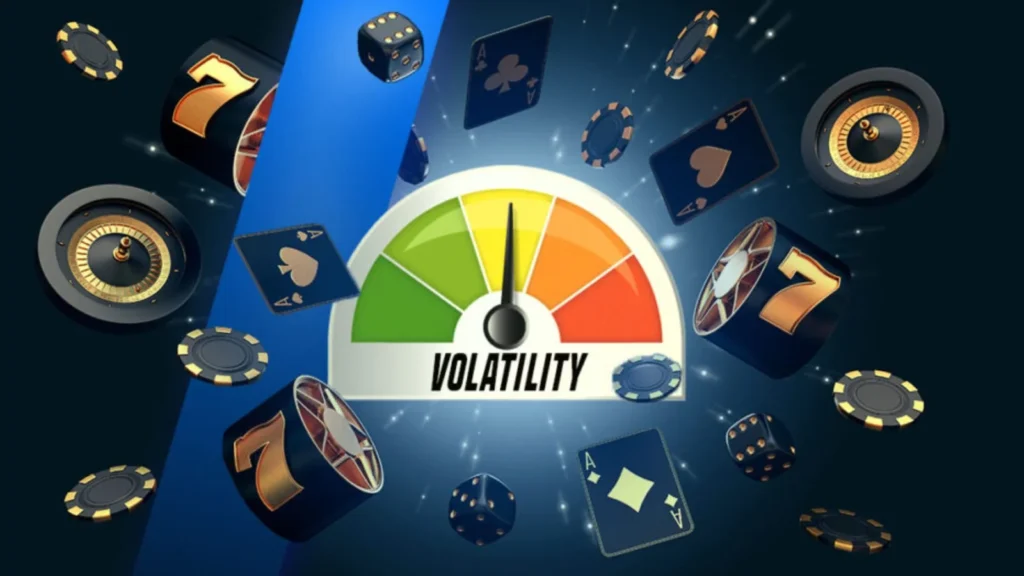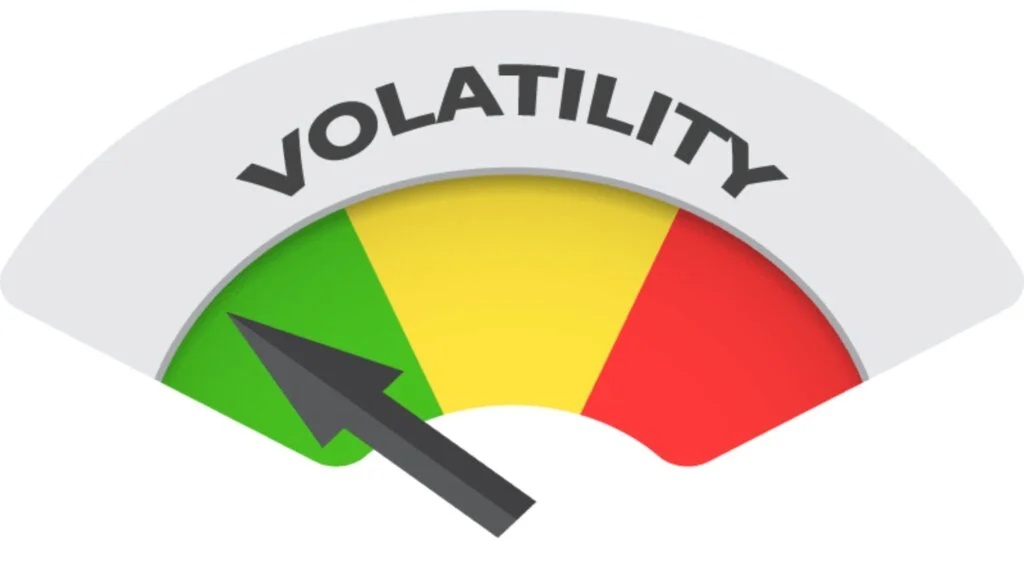Hey there, fellow gamers! Today, we’re diving into a really interesting topic that can totally enhance your casino experience: understanding volatility in casino games. Now, you might be wondering, what exactly does volatility mean in this context? Let’s break it down together!
In simple terms, volatility refers to the risk involved in a particular game. It’s all about how often you can expect to win and how big those wins might be. Some games are low volatility, which means you might hit smaller wins more frequently. Others are high volatility, where the wins might be less frequent, but when they do happen, they can be pretty massive!
Understanding volatility is essential because it helps you choose games that align with your playing style and risk tolerance. If you’re the kind of player who enjoys sipping on a drink and playing for a while, low volatility games might be your jam. But if you’re looking for that adrenaline rush and don’t mind waiting a bit longer for some big wins, high volatility games could be more your speed.
So, why is it important to get a good grasp of this? Well, knowing the volatility of a game helps in setting your expectations and managing your bankroll wisely. Imagine jumping into a high volatility slot without knowing, only to find yourself spinning for a good while with nothing to show for it. That can be discouraging! On the flip side, if you’re a high-roller looking for those big thrills, you might just love where high volatility games can take you.
In short, whether you’re a casual player or a thrill-seeker, understanding volatility is key to an enjoyable and successful casino experience. Stick around as we explore more about low versus high volatility, how it varies between slots and table games, and how it all ties in with RTP in the upcoming sections!
Low vs High Volatility: What Suits Your Style?
So, you’re diving into the exciting world of casino games, and you’ve come across the term “volatility.” It might sound a bit technical, but don’t worry! Understanding whether you prefer low or high volatility games is all about your gameplay style and what you hope to achieve when you sit down to play.
Low Volatility Games are like the steady, reliable pals who come through for you when you need them. These games typically offer smaller, more frequent payouts, which means you can enjoy a longer play session without blowing through your bankroll too quickly. But hey, they might not rocket you into the big win atmosphere as fast as some of their high-rolling counterparts. If you like to savor the experience and are more about the journey than the destination, low volatility might just hit the spot! Think of it as a cozy night in with your favorite movie – enjoyable and dependable.
High Volatility Games, on the other hand, are the thrill-seekers! They offer larger payouts, but hold onto your hats – wins can be pretty rare and often come after a good stretch of dry spells. If you’re someone who loves the adrenaline rush and isn’t afraid to take a few risks for the chance of hitting that big jackpot, then these games could be the perfect fit for you. It’s like going on a rollercoaster ride – exhilarating but with some twists and turns along the way!
So, how do you know what suits you best? Here are a few questions to consider:
- What’s your budget? If you’re playing on a tighter budget, low volatility might help you extend your playtime.
- What’s your mood? Some days you may crave a calm, steady game, while other days you might want the thrill of a big win!
- How do you handle risk? If you’re up for the challenge and can handle the swings, high volatility could be your jam.
In the end, it’s all about finding that sweet spot where you feel comfortable and excited. Try a few games from both sides of the volatility spectrum and see what resonates with you. Remember, the best experience is one that brings you enjoyment, no matter the volatility level!

Volatility in Slots vs. Table Games
When we talk about volatility in casino games, it’s essential to understand how it differs between slots and table games. These two categories offer unique experiences and can significantly impact your gaming strategy and enjoyment.
Let’s dive into how volatility plays out in these two types of games.
Slots
Slots are often the stars of the casino floor, with their bright lights and catchy themes. But when it comes to volatility, they can really run the spectrum. Here’s what you need to know:
- High Volatility: These slots tend to have larger payouts, but they don’t hit as often. You might go through long stretches where you don’t win, but when you do, it can be a game-changer! Perfect for those who love the thrill of the chase and have a bit of a buffer for their bankroll.
- Low Volatility: On the flip side, low-volatility slots pay out more frequently, but the wins are generally smaller. This is great for players who want a more steady gaming experience without too many dry spells. If you’re the type who enjoys a nice, consistent flow of wins, these slots might be your go-to.
One more thing to consider is that many modern slots showcase a mix of both styles. You might find one that hits often but still offers a chance for those bigger wins, making your sessions a little more exciting!
Table Games
Now, let’s switch gears and talk about table games, like blackjack, roulette, and poker. Unlike slots, the volatility in these games can be a bit more nuanced:
- Strategic Base: The volatility in table games often depends on your strategy. For example, in blackjack, your betting style and decision-making can either raise or lower the risk level. A more conservative approach can lessen your volatility, while being aggressive can ramp it up significantly.
- Game Odds: Each table game has a built-in house edge, which ultimately defines its volatility. Games like baccarat have a lower house edge and offer more predictable outcomes, leading to a steadier game compared to something like poker, where your success largely depends on your skill and the opponents you face.
In summary, the volatility in both slots and table games plays a crucial role in your overall experience. Choosing the right game based on your risk tolerance and playing style can make all the difference in your gambling journey. So, whether you’re a slots enthusiast chasing those big jackpots or a table game strategist, understanding volatility is the key to having a fun and potentially profitable time at the casino!
Balancing volatility and RTP
So, you’ve learned about volatility in casino games, but now let’s dive into the balance between volatility and Return to Player (RTP). Understanding this relationship is essential for crafting a gaming strategy that works for you. Think of it as a dance — you want to find the right rhythm that keeps you both entertained and in control of your bankroll.
What is RTP?
RTP represents the percentage of all wagered money that a game is expected to return to players over time. For example, a slot with an RTP of 96% theoretically returns $96 for every $100 wagered. But remember, this is an average calculated over thousands or millions of spins. That means you might not see those exact numbers in your session!
How does volatility fit in?
When we talk about volatility, we’re looking at the risk factor associated with a game. High volatility games can give you massive payouts, but they don’t hit as often, meaning you’ll see a lot of dry spells before those big wins. On the flip side, low volatility games pay out smaller amounts more frequently, giving you steadier action but often less of a payout when you hit.
Here’s where balancing comes into play. High volatility games might be tempting for their potential for big wins, especially if you’re feeling lucky. However, if you’re on a tight budget or prefer a more extended gameplay experience, you might want to stick with lower volatility games that offer consistent payouts.
Finding your sweet spot
- If you love the thrill and can handle the swings: High volatility games might be your playground. Just make sure you have a proper bankroll management strategy to weather those gaps between wins.
- If you want more frequent wins: Go for low volatility games. You’ll likely see smaller wins more often, keeping your playing time longer and your spirits high.
- Mix it up: Some players enjoy a balance of both. You might start with low volatility games to warm up and then shift to a high volatility game once you’re feeling more adventurous!
Remember, it’s all about what you enjoy and how you like to play. There’s no right or wrong answer, just what feels right for you. So take your time, explore different options, and find that perfect balance of volatility and RTP that aligns with your gaming style!

